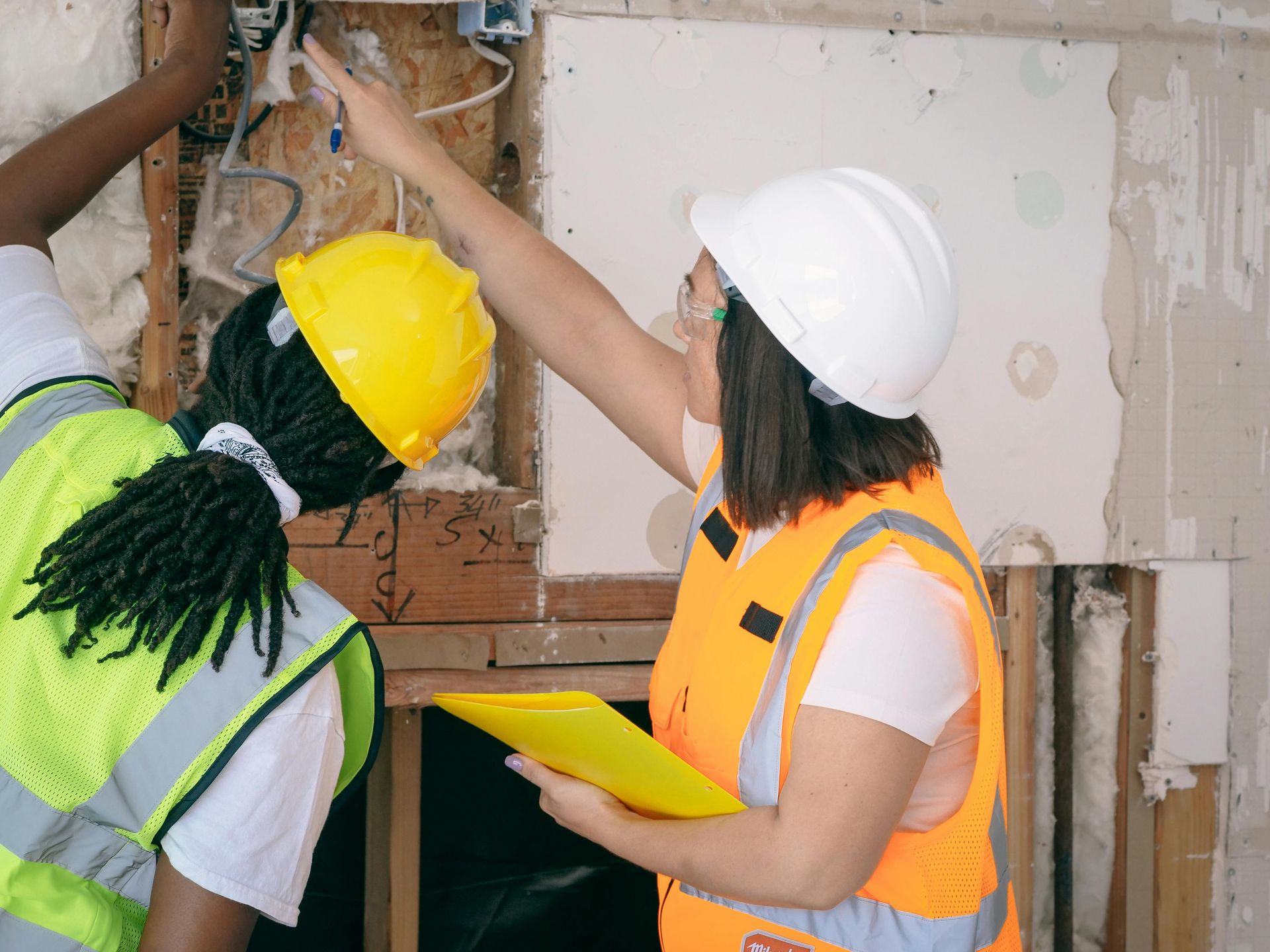The Role of Milestone Inspections in Preventing Structural Failures
Buildings naturally deteriorate over time due to environmental exposure, material aging, and general wear and tear. If left unchecked, minor structural issues can develop into major safety hazards. Milestone inspections are essential for identifying weaknesses before they lead to costly repairs or catastrophic failures. These inspections ensure buildings remain safe, compliant with regulations, and structurally sound for long-term use.
Understanding Milestone Inspections
Milestone inspections are scheduled assessments designed to evaluate a building’s structural condition at key points in its lifespan. These inspections help property owners maintain compliance with local safety laws and prevent unexpected structural issues.
What Are Milestone Inspections?
A milestone inspection is a detailed evaluation conducted by structural engineers or licensed professionals to assess a building’s stability. These inspections focus on identifying early signs of structural deterioration, allowing for timely maintenance and repairs. Buildings that meet certain age requirements must undergo these inspections to ensure they remain safe for occupancy.
Why Are They Required?
Buildings face constant exposure to environmental stressors like heavy rain, hurricanes, and humidity, which can weaken their structural integrity. Milestone inspections are required to:
- Identify potential safety hazards before they become severe
- Ensure compliance with updated building codes and regulations
- Reduce the risk of sudden structural failures
- Protect property value by maintaining a building’s long-term stability
How Milestone Inspections Help Prevent Structural Failures
Identifying Structural Deficiencies Early
Inspectors assess key structural components such as foundations, walls, beams, and load-bearing columns. They look for signs of deterioration, including cracks, corrosion, and shifting materials. By addressing these issues early, property owners can avoid expensive repairs and potential safety risks.
Structural failures often result from small, unnoticed issues that worsen over time. Research from the National Institute of Standards and Technology (NIST) highlights the importance of regular inspections in identifying and mitigating these risks.
Ensuring Compliance with Building Codes and Regulations
Construction codes evolve to reflect new safety standards. Older buildings may not meet modern requirements, making milestone inspections necessary. These inspections help building owners identify non-compliance issues and make necessary upgrades before they lead to fines or legal consequences.
Enhancing Safety for Occupants and the Public
Unsafe buildings pose risks to residents, employees, and visitors. Structural weaknesses can lead to partial collapses, falling debris, or other hazards. Regular inspections help ensure buildings remain stable and safe for those who use them daily.
Reducing Long-Term Maintenance Costs
Delaying maintenance often leads to higher repair costs in the future. A milestone inspection can catch small issues—such as minor cracks or leaks—before they require major structural repairs. Preventative maintenance keeps long-term costs manageable and extends the life of a building.
The Milestone Inspection Process
Milestone inspections follow a structured process to ensure a thorough evaluation of a building’s condition. The process is divided into two phases, each serving a specific purpose in assessing structural integrity.
Phase 1: Visual Inspection and Preliminary Assessment
The first step of a milestone inspection involves a visual assessment of the building. Engineers examine exterior and interior structural elements to identify any visible signs of damage. If no major concerns are found, the inspection process ends here.
Phase 2: In-depth Structural Analysis and Repairs
If potential structural issues are identified in Phase 1, a Phase 2 inspection is required. This phase involves more detailed testing, such as material sampling and load testing, to determine the severity of the problem. Repairs or reinforcements may be recommended based on the findings.
Common Issues Found During Inspections
Milestone inspections often uncover issues that, if left unaddressed, could compromise a building’s structural integrity. Some of the most common findings include:
- Cracks in foundations and load-bearing walls
- Water damage that weakens materials over time
- Corrosion of metal reinforcements
- Shifting or settling of structural components
Legal Requirements and Compliance
Many states have introduced milestone inspection laws to enhance building safety, particularly in areas prone to extreme weather and environmental wear. These regulations help ensure older buildings remain structurally sound and safe for continued use.
Florida’s Milestone Inspection Law and Recent Updates
After the 2021 Surfside condominium collapse, Florida implemented strict milestone inspection laws requiring buildings over a certain age to undergo structural evaluations. The law applies to:
- Buildings 30 years or older
- Coastal buildings 25 years or older
- Re-inspections every 10 years after the initial evaluation
Who Is Responsible for Scheduling Inspections?
Building owners, property managers, and condominium associations are responsible for arranging milestone inspections. They must hire licensed professionals to complete the process and ensure their buildings remain in compliance with state regulations.
Key Deadlines for Compliance
To ensure ongoing structural safety and regulatory adherence, building owners must follow milestone inspection requirements based on their building’s age and location. These inspections typically follow a two-stage process, with deadlines set by state and local regulations.
- Initial Inspection: Required once a building reaches a specified age (e.g., 25-30 years, depending on location).
- Re-Inspections: Conducted at regular intervals (e.g., every 10 years) to maintain compliance and ensure continued structural integrity.
Best Practices for Preparing for a Milestone Inspection
Preparation ensures a smooth inspection process and helps property owners address minor issues before they escalate.
Gathering Essential Documents and Records
Having the right documentation ready can speed up the inspection process. Property owners should gather:
- Original construction plans and blueprints
- Maintenance and repair records
- Past inspection reports and compliance documents
Choosing a Qualified Structural Engineer or Inspector
Hiring an experienced professional ensures an accurate and thorough inspection. Aurora Consulting Group provides expert milestone inspection services, helping property owners stay compliant with safety regulations. Their team specializes in evaluating structural integrity and offering recommendations for necessary repairs or reinforcements.
Addressing Minor Issues Before the Inspection
Taking care of small repairs before the inspection can prevent unnecessary delays. Property owners should:
- Fix cracks in walls and foundations
- Ensure drainage systems are functioning properly
- Repair any signs of water damage
The Long-Term Benefits of Regular Structural Inspections
Regular milestone inspections offer several advantages beyond basic compliance. They help maintain building value, prevent emergency repairs, and improve overall efficiency.
Protecting Property Value and Investment
A well-maintained building retains its value better than one with unresolved structural issues. Buyers, tenants, and investors are more likely to choose properties that have a documented history of safety and maintenance.
Avoiding Expensive Emergency Repairs
Emergency structural repairs can be costly and disruptive. Regular inspections help property owners plan maintenance strategically, preventing unexpected financial burdens.
Improving Energy Efficiency and Sustainability
Buildings with intact insulation, stable walls, and proper sealing:
- Reduce energy loss and lower utility bills
- Require fewer renovations over time
- Contribute to long-term sustainability efforts
For more information on energy-efficient building practices, visit the Department of Energy’s website for expert recommendations.
Conclusion
Milestone inspections play a crucial role in preventing structural failures and ensuring long-term safety. They help property owners identify issues early, comply with regulations, and maintain building stability. Regular evaluations reduce risks, lower maintenance costs, and protect occupants from potential hazards. By working with experienced professionals like Aurora Consulting Group, property owners can ensure their buildings meet safety standards and remain structurally sound for years to come.




